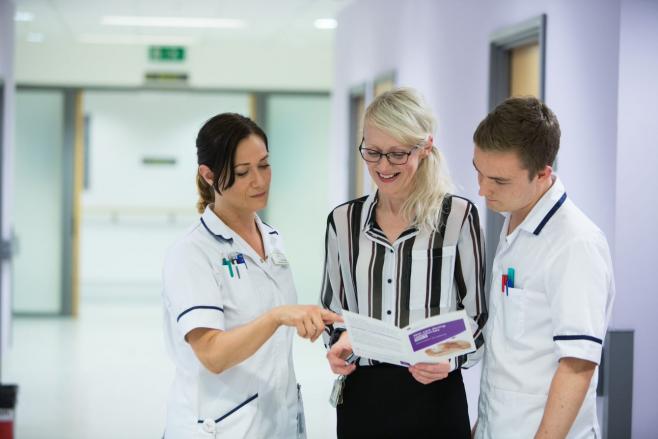You are here
Working to maximise the contribution of Allied Health Professions
There are many opportunities for AHPs to demonstrate their value via new roles and services.
Rising health and care demands from an older population with more complex needs; the development of new technology; and workforce shortages all create challenges that AHPs can help address. HEE’s national AHP programme is exploring opportunities to utilise the skills and experience of AHPs in new ways to build capacity, alleviate workforce pressures, improve access to early diagnosis and treatment, as well as develop the AHP professions.

The drive to provide more care closer to home and increase capacity in primary care brings many opportunities for AHPs within the wider GP practice multi-disciplinary team.
The development of frameworks to identify and document core capabilities within primary care has been key to setting minimum standards for safety and efficacy. Joint work with NHS England and Public Health England has supported this work to ensure joined up workforce planning and modernised commissioning of services.
HEE is working with the AHP professional bodies and health systems to support the development of AHP roles in primary care. This includes musculoskeletal (MSK) first contact practitioner (FCP) roles, paramedics, AHP dietitians and occupational therapists.
The Five-Year Framework to support the implementation of the NHS Long Term Plan includes provision for physiotherapists and paramedics working in primary care so HEE’s work to develop first contact practice in primary care is of particular relevance.
The contribution of AHPs within maternity services is significant. However, it is largely unseen and often not understood. AHPs are seldom referred to in local maternity workforce plans, with the exception of paramedics in the antenatal stage, operating department practitioners during the intrapartum phase and physiotherapists during post-natal care.
To improve awareness and understanding, the HEE AHP programme commissioned the development of an interactive guide – 'The engagement of allied health professionals and psychologists in the maternity care pathway’ This comprehensive guide has been produced as a reference document, to support health and care staff who have an interest in the planning, development and delivery of maternity services.
The work is informing further national workforce development and broader skill mix developments within maternity and gynaecology services.
The national Transforming Care Programme (TCP), the Learning Disabilities Mortality Review (LeDeR) Programme and more recently the NHS Long Term Plan all highlight the urgent need to develop the learning disability and autism workforce.
You can find out more about this programme on our dedicated pages.
The Stepping Forward to 2020/21: Mental Health Workforce Plan for England, alongside the NHS Long Term Plan, clearly articulates the need for workforce development within mental health.
HEE has commissioned the Royal College of Occupational Therapists and the British Association of Arts Therapists to lead a collaborative piece of work to determine the key opportunities for impact by the AHP workforce, The group commissioned Clever Together to run an inclusive crowd sourcing project to harvest the ideas across the professions. The outcome of this work has generated a wide breadth of opportunity which is being fed into the national AHP task and finish group for mental health, led by Thomas Kearney, Deputy Chief AHP Officer, NHS England.
Radiography was identified as a priority profession in the 2017 Cancer Workforce Plan as both the diagnostic radiographer and therapeutic radiographer workforces are under pressure. Without action, there will not be enough staff to deliver the Cancer Taskforce Strategy ambitions by 2021. HEE is committed to boosting the supply, retention and capabilities of radiographers.
Therapeutic radiography is one of the four ‘small and vulnerable’ professions. A Workforce Summit, held in partnership with the Society of Radiographers to discuss future supply, career pathways and how to retain the NHS therapeutic radiographer workforce, is guiding HEE’s current and future work plan for this branch of the profession.
Take a look at our wider cancer and diagnostics work.